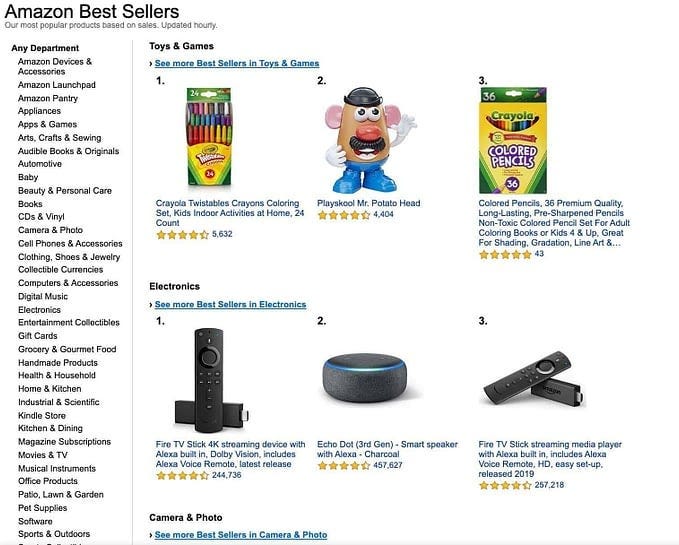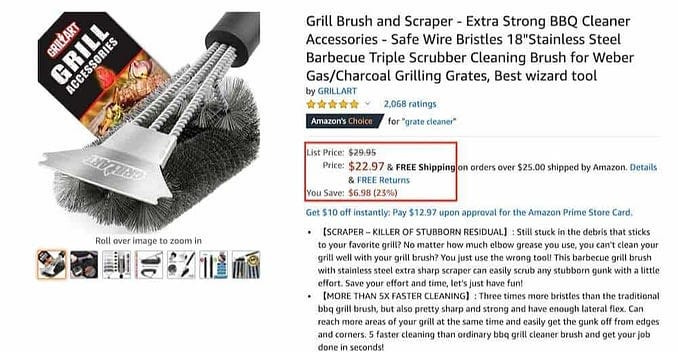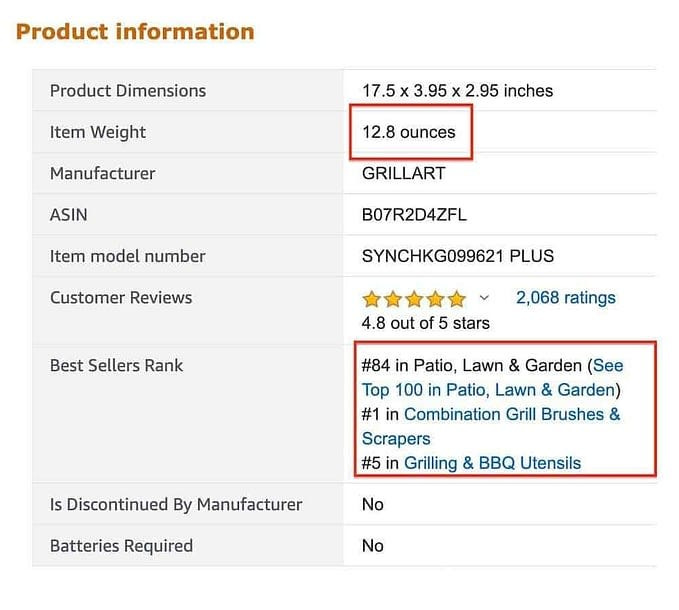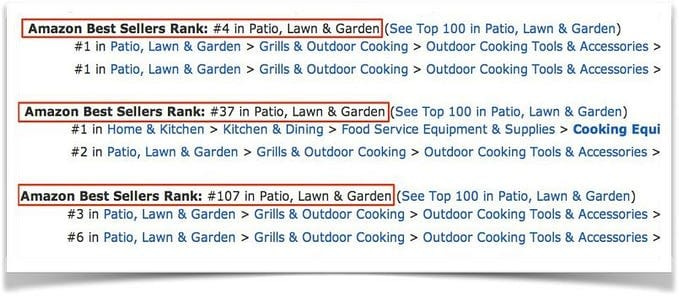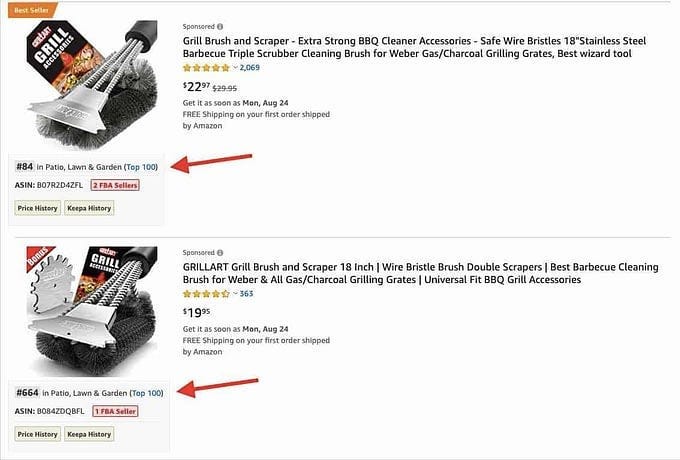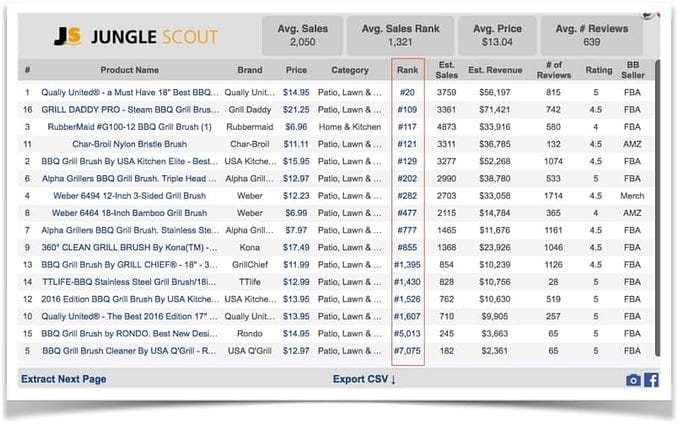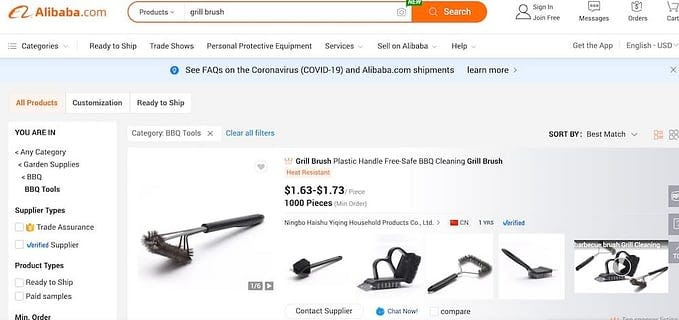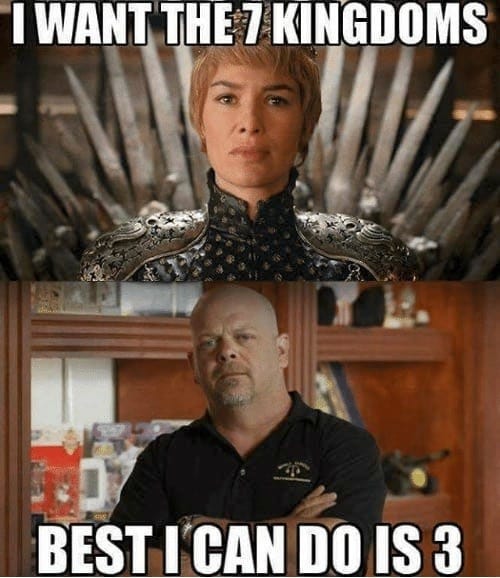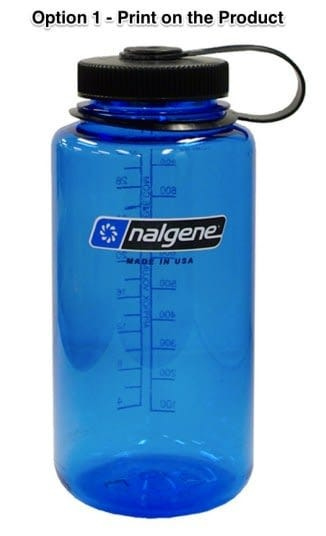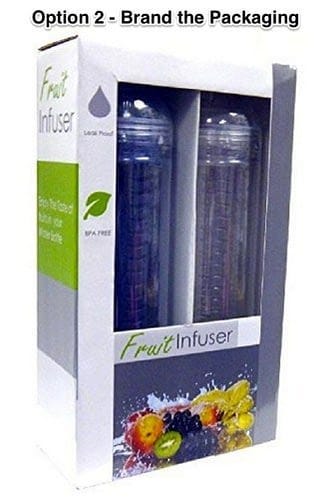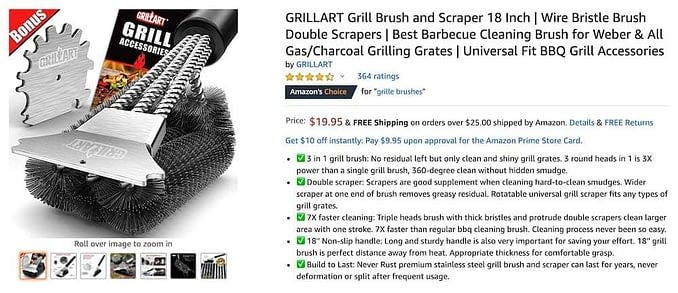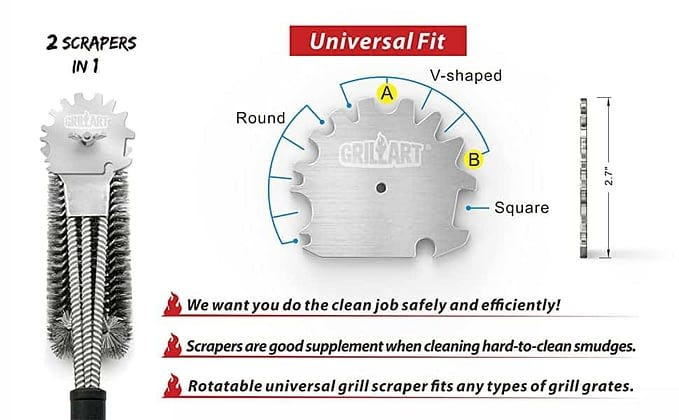How to Start a 7 Figure Amazon Business in 2022
How to take advantage of the worlds biggest e-commerce engine
How to take advantage of the worlds biggest e-commerce engine
When my husband and I decided to try building an Amazon FBA business a few years back, little did we know we’d grow it to over 1 million dollars in revenue within 12 months!
We had one small kitchen product which from our research seemed to be in fairly high demand on Amazon.
It cost us less than $2 to buy it and ship it to Amazon. We sold it for $15 and within a year we’d sold over 84,000 units.
I’d never seen anything like it.
I’m not saying it was easy. We worked our little buns off over that year, but it was incredible to see how the Amazon machine worked.
We continued to grow the business to revenues topping $3 million (net profits in the region of 18%) until we sold the business in 2020.
So is it still possible to repeat this kind of success in 2022?
Our research via many Amazon selling groups we’re part of tells us absolutely!
Amazon is still a very lucrative and viable business model, and thousands of sellers are creating life-changing income every day!
Here’s how to start and grow a 7 figure Amazon business in 2022.
Step 1. Choose Your Niche
If you’d asked me 5 years ago how important a niche was for Amazon, I would have said not so important.
Just pick a product that is high in demand and focus on selling that product.
These days however it’s a far more competitive market and if you’re looking for long term success and the most bang for your buck, then building a true brand will get you much further than just trying to milk a popular or trending product.
Case in point, you could probably make a killing in face masks right now, but in a year or two’s time when the pandemic has disappeared your business will likely die with it.
Jeff Bezos theory on this is as follows;
“I very frequently get the question: ‘What’s going to change in the next 10 years?’ And that is a very interesting question; it’s a very common one. I almost never get the question: ‘What’s not going to change in the next 10 years?’ And I submit to you that that second question is actually the more important of the two — because you can build a business strategy around the things that are stable in time. When you have something that you know is true, even over the long term, you can afford to put a lot of energy into it.”
So when thinking about your niche and brand the key questions to ask yourself are;
What am I interested in, passionate about, would love to build a brand around?
Who are the kind of people I would like to help, transform, serve, solve a problem for?
Is there a buyers market for this type of business and product?
Is this a growing market that will still be popular 10 years from now?
What would I be happy to invest my time and attention in for the next 2–5 years minimum?
What would I be happy to build a full content marketing strategy around both on and off Amazon?
In a nutshell, this is a business, not a get-rich-quick opportunity and as such you need to consider what business you’d love to start and grow over the coming years.
Step 2 . Find Products to sell on Amazon FBA
There are several routes you can take to start selling on Amazon;
You can create and manufacture your own products from scratch.
You can buy cheap products from garage sales etc and sell at a higher price on Amazon (this is called retail arbitrage).
You can find and improve upon products that are already selling well.
You can source popular products already selling well and simply sell the same products under your brand.
In this article, we’re primarily talking about points three & four otherwise known as selling private label products under our own brand.
Private Labelling Means:
“Private-label products or services are typically those manufactured or provided by one company for offer under another company’s brand. Private Label goods and services are available in a wide range of industries from food to cosmetics to web hosting.”
Source — en.wikipedia.org/wiki/Private_label )
Amazon sells over 200 million products to the US audience alone, so as I’m sure you can imagine there’s no shortage of opportunity!
Sourcing a product is all about opportunity. It’s about finding products that are popular and in demand, but which aren’t being marketed very well allowing us as superior marketers (obviously) to get in there and swipe all the sales!
The best place to start looking for potential product ideas is on the Amazon Best Sellers List
The Amazon Best Sellers List shows you the current top 100 best selling products on Amazon category by category.
Simply click on the categories on the left to see the top bestsellers in each category.
The ideal scenario is to find popular products that are selling well, but that don’t have too much competition.
Guidelines for Product Research for Amazon FBA
There are 3 main criteria you’re looking for products to meet when sourcing potential private label products to sell.
These are;
1. The product needs to be priced between $15 — $50 to ensure a decent profit margin.
2. The product ideally needs to be under 2lbs in weight to keep shipping costs down.
3. It has a low Best Seller Rank, (found in each individual product listing by scrolling down to Product Information).
This is your key to assessing the demand for a product.
Initially when going through the bestsellers as long as you find products with BSR’s of around 1500 or below you’re heading in the right direction, but we’ll go into more details in the next section as this really is the most important part of product selection.
Assessing the Demand of a Product
The demand for a product is assessed by looking at its Best Seller Rank (BSR).
Each and every product on Amazon has a BSR and can be found by scrolling down to the ‘Product Information’ section of the individual product listing as identified above.
The BSR of a product determines how many sales they’re making and updates on an hourly basis.
The lower the BSR number (i.e, the closer to 1), the more sales a product is making. The higher the BSR number (i.e, furthest away from 1), the fewer sales a product is making.
Therefore the goal when searching for a potential product to sell is to check how much demand there is for that product by seeing how many similar products all have nice low BSR’s for their main category on page one of the Amazon search results.
As a rough guide if you find plenty of products on page one with BSR’s under 1500 that’s a sign that the product has potential. (As a ballpark we used to look for five or more products on page one with BSR’s under 1500).
I say rough guide because it is category dependant, so in a more popular category like Home & Kitchen, you could determine demand by finding 5 or more products under 2000 BSR, but with a less popular category like Arts & Crafts, you would be looking for products with BSR’s under 500 on page 1.
In Junglescouts post how to find products to sell on Amazon, they also recommend that you find;
Products that can be sold year-round and are not affected by seasonality
The product can be improved
It’s simple to manufacture (you don’t want too many easily breakable moving parts)
Best Amazon FBA Product Research Tools
You can absolutely do this product research manually.
Once you have found a product that roughly meets the criteria, using the main product keywords type those into the Amazon search bar and select ‘All Departments’.
What pops up is Amazon’s own Page 1 search results for that keyword on Amazon.
If you now click on each product and scroll down to the product details, you’ll see their respective BSR’s.
You’ll need to do this for each product on Page 1 and make a note of each BSR on a spreadsheet or notepad so you can see how many meet the required BSR range on page one.
It’s doable but laborious.
There is a free chrome extension that makes the job a bit easier as it shows you the BSR right there on page 1 without having to click on each product, so you can just scroll through the BSR’s to see how many meet the range.
You can add it from here — DS Amazon Quick View
But by far the easiest way to access and assess the information is to use a piece of software called Junglescout.
You simply add Junglescout to your browser bar and click it when on your page one search results for your main keyword.
It immediately shows you all the main stats for all the products on that page and you can sort the BSR’s in order to quickly and easily determine demand.
Assessing the Competition
So now we’ve determined the popularity of our potential product, we need to see how much competition there is.
Don’t get too caught up in this.
While lower competition is better, 90% of marketers on Amazon won’t put the effort required into their product and by following a few steps repetitively every day you should be able to out-market most products.
You’re ideally looking for as many products on page 1 as possible that have reviews under 1000, even under 500 if possible.
But don’t be put off by higher reviews. If you’re prepared to put the work in and build a brand rather than just try to compete on product reviews, pricing, and keywords alone, you’ll soon overtake hundreds of competitors on Amazon.
Step 3 — Source Your Private Label Products
Now we’ve completed our product research and have some products in mind, it’s time to find relevant manufacturing companies who can offer the products as private label.
In other words, they make the product, we buy it from them at wholesale prices and brand it with our own brand.
You need to start by looking for a manufacturing company that supplies the private label products you’re looking for.
Head to websites like Alibaba.com, GlobalSources.com, DHGate.com, which specialize in global wholesale trading and showcase thousands of private label products and suppliers from countries around the world.
Once on the website simply type in the keyword of your product and do a search for a supplier.
After years of dealing with suppliers and even visiting the factories and meeting with the owners, we reached a point where we always dealt directly with the manufacturers.
When starting, however, out it can be quite intimidating and bearing in mind you’re tying up cash in inventory, choosing the right supplier can get confusing and worrying.
On Alibaba, they do have filters to only search for verified sellers or use their Trade Assurance program.
However, many US sellers won’t be verified on the platform as it requires a physical inspection by a third party.
On all the sites you can see more details about the suppliers and do further due diligence to ensure they are who they say they are and they’re not about to run away with your money!
Please note, almost all of the suppliers we dealt with along the way, were friendly, helpful, trustworthy and desperate to remain in favour to get more business.
If you’re still unsure though and to make your life so much easier, JungleScout, a leader in Amazon selling tools, have developed a powerful piece of software to help you find the best products and suppliers.
It’s not free, but it does come as part of JungleScout’s overall package of tools, which is an absolute bargain!
You can see more details here.
Once you’ve chosen a product and supplier you’d like to work with, it’s time to start negotiations!
Some Negotiation Tips
When I started this process I remember feeling terribly nervous.
I was worried I was going to sound like an idiot who knew nothing about retail, manufacturing, or private label, that they would see right through me & therefore double the prices.
The fact is, the person you’re speaking to is likely a salesperson on the team trying to make a quota of sales for the manufacturer’s and they’re open for business!
I want you to imagine you’re at a car boot sale, a garage sale, a Sunday market, or a fair and that there are a lot of stalls all selling the same things.
You go to one stall, peruse the products, ask for their best price & tell them you’ll get back to them.
You then head to another stall and do the same except now you’re comparing their product & prices with the owner of the first stall. Who’s offering the best deal?
Perhaps you do this with four or five stalls.
Now you’re going to tell all stall owners that you want to buy the products in bulk, but right now you’re doing a test run to ensure it’s going to sell to your market.
So you’d like an initial test order of a few hundred items which you’ll most likely follow up with many more orders into the thousands, potentially even tens of thousands (remember we sold 84,000 units if our first product in year one!)
Now, what’s their best price?
Ultimately you’ll choose not just on price but the ease of communication, speed of response, quality of the product, branding quotes, shipping quotes, and gut instinct.
If you’re still feeling a little new and vulnerable please try not to worry. In most instances, you will come across amazing suppliers who will hold your hand and help you through it step by step.
My first supplier was like that and we’ve had several students who have reported the same.
But as I said, the people you will talk with will most likely be salespeople trying to sell their products to you amongst the hundreds of suppliers selling the same things.
It’s their job to try and sell you their product and it’s their job to sell you as many of their product as possible.
So you need to go into negotiations with your eyes wide open.
Here are some tips that I learned along the way;
Research your products until you know every feature.
This is super easy by simply going through the relevant product reviews on Amazon.
Read through them including the bad reviews so you can also see where some of the product challenges are.
This way you’ll have solid product knowledge which will help when discussing the product with the suppliers (and when promoting the products on Amazon).
2. Don’t go straight in with your price and quantity demands on the first email.
Strike up a conversation.
Ask questions.
Tell them you’re an e-commerce company looking to expand into this particular product range and niche and you’re on the lookout for some great suppliers to work with to help you bring this product to market.
3. Always be courteous and calm.
If you’re sourcing overseas, please remember there are massive cultural differences between us and a country such as China, not to mention language barriers, so treat everyone you talk to with the utmost respect and understand that they may not have understood your request entirely, so be as clear and descriptive as possible when requesting information.
4. Golden Rule — EVERYTHING IS NEGOTIABLE.
Do not accept their first price.
Use email, skype, or even the phone to enter into friendly but firm negotiations until you reach a deal you and they are happy with.
Remember you are the customer, they are the seller.
5. Get as much as you can in writing.
There are no contracts and little come back if everything goes wrong.
It’s down to you to do as much due diligence on the company as possible and ensure all your negotiations are in written form, plus the resulting deal itemized out on a purchase invoice supplied by them prior to shipping.
6. Regards paying for the stock expect to pay 30% upfront and then 70% prior to shipping.
Make sure photographs are taken of your goods before leaving the warehouse and pay using Paypal or a credit card so that you can reclaim your monies should the stock not arrive for any reason.
7. Relax and know that if you have followed the steps above it is likely to go fairly smoothly.
Things going wrong like inventory going walkabouts or suppliers letting you down can happen but are much more unlikely if you strike up a relationship.
Get to know your supplier and do your due diligence.
How to use the Amazon FBA Calculator and Calculate the Financial Viability of your Products
It’s extremely important to calculate the financial viability of your products before you get too excited and start to order and sell products only to find you can’t make any money.
You might find a product that sells for around $25 on Amazon and spy a supplier offering it for only $2 and think you’re onto a winner, but by the time you add in shipping fees, Amazon FBA fees, marketing costs, etc it just might not be viable.
To make this as easy as possible I have created a product P&L sheet you can download for free here (just click ‘use template’ to make a copy on your google drive).
Please note all the numbers in the sheet are for demonstration purposes only.
It’s imperative you populate the spreadsheet with actual numbers following negotiations with suppliers, shipping companies, the inspection service you use (see Shipping section below) and utilizing the Amazon Fee Calculator.
Here’s my article walking you through How to Use the Amazon FBA Calculator For Beginners.
In an ideal world we’d all love to be walking away with 50% profits or more but after custom duties, Amazon Fees, marketing costs & overheads if you’re generating 15% — 25% profits, you have an excellent business.
Testing Your Products
Once you’ve proven financial viability and have decided on a product I strongly recommend getting samples from multiple suppliers before ordering a larger quantity.
We have had some serious rubbish sent to us over the years.
Products that look fabulous on the pictures, all the finances work out and we’re super excited to add them to our inventory but then the sample arrives and you wouldn’t give it away let alone sell it!
The quality of your product is essential!
Once you start selling on Amazon, if you’re selling something that’s badly finished, doesn’t work, breaks easily, or is simply cheap rubbish your customers will have no issues in vocalizing their dissatisfaction!
People are far happier to report their negative feelings over a product than come on over and leave a glowing review.
So don’t risk the wrath of your customers. Just because you’re buying something manufactured in China doesn’t automatically mean it’s cheap crap.
That is a myth. Just like other countries around the world, there are good and bad suppliers.
It’s your job to root out the good ones.
Building Relationships With Your Suppliers
This is well worth a mention while talking about suppliers.
Over the years when we found great suppliers we took the time to build solid relationships with them.
We visited China on many occasions, inspecting factories, looking first hand at potential products, and negotiating face to face.
The factories we visited were well maintained with good working conditions and generally happy teams.
If you want to build a long term, ethical business and do business with people you like and trust this is a step that will do you well as your business grows.
You’ll know more about how your products are made and will feel more confident selling your products to your customers.
You’ll likely get better rates over time and more favourable credit terms also.
Clearly, as I write this we are mid pandemic, and right now is not the time for tripping over to China to meet your suppliers!
Plus there are so many more suppliers nowadays from around the globe, so you’re just as likely to be developing a relationship with a factory based in Turkey, Vietnam or the United States!
However, I wanted to mention it as a long term strategy as there is no doubt having those stronger personal relationships with our suppliers helped our business over the years.
For now just begin to develop relationships over the phone, email, or skype and plan to visit as the world opens up and your business grows.
Step 4. Establishing Your Brand
Whether you choose to start developing a long term brand or just pick something to go with your first product, your own brand is an important part of your marketing strategy.
I have no doubt creating a strong brand name & logo helped our fast growth vs something along the lines of ‘discountgoodsrus’ or ‘coolstuffforsale’!
Branding is a huge subject that’s tough to cover in great detail in one segment of a blog post, but here are some questions you should be asking yourself to get started;
What do you stand for? What are your values?
How can your brand improve your target markets life?
What are 5 emotions you want people to feel when they come across your brand?
What’s the deeper reason for people wanting to use your products and services?
How can you translate that into your brand message?
How have your most popular competitors on Amazon, branded themselves and their private label products?
How is their brand connecting with their audience?
What can you do better?
Your Brand Name
There are two brand names you’ll need for Amazon.
1. Your seller name. This is your company name which every product you sell on Amazon will fall under.
This may well be the same as your product brand name if you intend to only grow one specific niche.
However, your long term goals might be to expand into other niches and therefore you’ll want to create a more generic company name that will house all your product brands.
2. Your product brand name. For each and every product you list on Amazon you can have a separate brand.
So if you sell something in the kitchen category, you can have a kitchen style brand name, if you sell a toy you can have a brand name for that, and so on, setting each brand up under the umbrella of your main company.
Here are Amazon’s guidelines for creating your seller name:
“Your seller display name is displayed with your listings and on your Seller Profile. Sellers are generally allowed to be as descriptive or fanciful as they like when creating their display names. There are a few constraints, however.”
Each seller must provide a unique display name
Display names cannot include the word “amazon,” other Amazon trademarks or domain names.
You must have all necessary rights to your display name.
In addition to letters and numbers, you may use “-” and “_” but no other special characters.
Display names cannot be offensive or include profanity.
For readability, we suggest that you use a short display name with less than 20 characters.”
Your brand name is worth a little time to consider.
Our brand name helped us to stand out from the crowd of generic kitchen brands and over time we found that people actually searched for our brand name as well as our main keywords.
When I say a bit of extra time, please remember a brand name and design can be changed at a later stage so don’t allow this to hold you up for weeks or months on end.
Just take some time to consider who your market is and how your brand can resonate with them. If you can’t think of the perfect brand to get started, get started anyway!
Your Brand Design
Once you have your brand name it’s time to create a design for your product.
You have a couple of options.
Option 1 — You can brand the actual product either by actually printing on the product itself or maybe with stickers.
Option 2 — Leave the product as is and simply brand the packaging it comes in.
Either way, there will most likely be a cost from the manufacturer for plating up the machinery required to print the branding.
So when negotiating you need to find out what that cost will be.
Plus you will have to get the brand designed, which you can obviously do yourself if you’re the creative type or simply head over to fiverr.com and get someone on there to do it for you.
It’s a super simple process.
Just ask the manufacturer to send you photos of sample packages and the dimensions of the packaging and then design to their specifications.
They’ll give you all the information you need. Then send your design to them to print on your product/packaging.
NB: Time Saving Tip
As much as I now recommend choosing a niche & building a brand I also believe in imperfect action.
Get it done then get it right, is a quote from one of my business mentors who just happens to be a multi-million dollar seller on Amazon.
You don’t have to get your brand spot-on from the get-go.
The goal is to get a product up and selling on Amazon so you can learn the process and improve as you go.
Go for the quickest & simplest way to get your brand on the product or packaging.
Keep your costs low & improve with each order you make with your supplier.
Step 5. Create Your Seller Account
I’ve deliberately left creating your Amazon seller account until now as there is a monthly fee to sell on Amazon & you don’t want to start paying that until you’re almost ready to send stock in.
To ship your items to the Amazon fulfillment centers you’ll need to have your account and product listings ready to go.
Greg Mercer over at Junglescout has a step by step visual guide on how to sign up for your Amazon seller account.
Once you’re up and running on Amazon Seller Central, you’ll be ready to ship your items to the Amazon warehouses.
Step 6. Shipping Your Amazon Product
On first impressions, shipping seems an extremely complicated undertaking, however, it’s actually fairly simple once you understand the process.
You have a choice whether to ship by sea or by air.
When first starting out your inventory order quantities are likely to be fairly low (500–1000) and if you followed the product selection criteria and chose something light & small then albeit more expensive by far the fastest & easiest way to get your first few shipments to Amazon is by air.
For this, you’ll use an air express company such as FedEx, DHL, UPS.
The simplest route is to ask your suppliers to organize this for you. You can expect to pay around $7 / kilo with shipping times around 8–10 working days.
Take note! Do not overpay for shipping. Many suppliers will cut down the price of their products only to try to make it back on the shipping.
If you’re not happy with their quote get a direct price comparison from the air express company of your choice.
Once you start placing larger inventory orders of quantities 5000 or more you’ll want to start exploring sea shipping.
Using a Third Party Inspection Service
Where you send your products will depend on whether you choose to use a third party inspection & storage company.
This means that rather than sending your products directly from the manufacturers to Amazon's fulfillment centers, you instead, send them to a third party company who inspect your products as they come in, store them and send them on to Amazon for you as and when you’re ready.
We have always chosen this option for a couple of reasons;
1. Firstly storage costs at Amazon stack up pretty quickly. Keeping the inventory out of the Amazon fulfillment centers means we can send in smaller amounts as and when we need them.
2. It’s always good to have someone inspect your products before they’re sent to your customers, especially in the early days when you’re testing suppliers and establishing relationships. You want to be sure what’s being sent is quality.
We recommend Amazing Logistics in the US and have worked with Seb & his team for years.
However, be sure to do your own due diligence & pick a service that suits your needs.
If sending to a third party from the supplier simply give the address of your storage company to the supplier or air freight company.
To get the inventory into the Amazon fulfillment centers, either directly from your supplier or from your third party storage company you will need to create shipping labels inside of Amazon.
Step 7. Launching Your Products on Amazon
Okie Dokie. You are rocking and rolling!
Now we have our product, it’s been branded and is now winging its way to the Amazon fulfillment centers, what do we do when it gets there?
Here is our 5 Step Launch Plan to really get your product going with a BANG!
Optimize Your Listing.
Ensure there are keywords in your headline and your bullet points, that you have 5–7 attractive and enticing images and a solid product description.
If you’re brand registered, you can also add a video and on all product listings, you can add a product image gallery and a huge eye-catching product description below the main listing.
Personally, I would use every bit of real estate Amazon gives you to showcase your products and point out all the features and benefits.
None of your images will matter however if you’re not being found for your specific keywords.
Remember Amazon is a search engine and is getting more sophisticated as such every day.
To out market and outrank your competitors you need to ensure that when people are searching for your product or products yours comes up top of the list.
There are many ways to do this, but one of the biggies is the number of unique keywords you use in your listing via the headline and bullet points and in the backend when you list your product on Amazon. (You’re given the opportunity to add lots of relevant keywords in the backend of Amazon).
2. Focus on getting reviews.
This is an ongoing process throughout the life of your products on Amazon, but in the first few weeks, this is something you need to be focused on night and day.
Finding reviewers for your products will boost sales, help with keywords, and of course give your product credibility.
The rules all changed on soliciting for reviews a few years back, but that doesn’t mean you can’t ask for an honest review, it just means you can no longer pay for them (go figure!)
As you would in any business, focus on your products and your customer experience.
What do they see when they rip open the Amazon box?
Is your product well presented, is there a nice note or user guide included?
Is your product quality and does it do what you promised in your listing?
Is it value for money?
All these things and more will contribute to getting great reviews.
Here are 9 Proven, Viable and Amazon Legal ways to get customer reviews in 2022.
3. Start investing small amounts on Amazon Sponsored Ads asap.
Simply choose the automatic option inside of Amazon PPC.
You’re not setting any keywords or bidding for clicks straight away as this is more a data exercise than anything else.
Just set a daily budget and let Amazon do the work for you.
Please note you’ll find it difficult to spend even $25 a day, but your listing will start to get seen.
You’ll also gather some invaluable keyword data from your campaigns as they will show you which keywords your product is being found for and converting under.
As you grow and start to run more manual campaigns, you can utilize that data and target specific keywords ensuring those keywords are prominent in your product listing.
4. Create some keyword-rich FAQ’s on your listing.
Go through competitor’s product pages, see what questions customers are asking and feedback being left in the reviews section and add those questions into your listings with comprehensive answers.
Always be looking for ways to add value.
5. Look for bloggers or you tubers with large followings to review your product and post about it or make videos about it.
Ensure they link back to your product on Amazon and even give them a discount or special offer just for their customers for a limited time. (This was the biggest contributor to our meteoric growth in our first year on Amazon)
All of the above will boost views, conversions, and sales in the first few days and weeks which will ensure your ranking falls from the high hundreds of thousands into the low thousands or even hundreds!
At this point what I call the ‘Amazon Stream’ will kick in and you’ll start to get organic sales from Amazons own mix of marketing they do on our behalf!
Please note the key to out marketing your competition on Amazon is to do something EVERY SINGLE DAY.
If I could give you the main secret to our success, it’s that we consistently found reviewers, ran ads, and increased our web presence every single day without fail.
This is just a taste of what you could do to market your product on Amazon but it’s more than enough to get you started with flying colours!
Step 8. Building Your ‘Off Amazon’ Audience
This was our ‘secret sauce’ in the first year of our business and was certainly what helped us grow so quickly.
As I said above using Amazon PPC will be one of your greatest marketing channels for selling on Amazon, but if you can couple this with quality traffic coming in from external sources then you’re going to accelerate your sales velocity which is going to increase your ranking.
There are a multitude of ways to grow your brand off of Amazon.
By far the most effective and for long term growth will be to build your email list.
One of the fastest ways to grow a business on or off of Amazon is to build an asset base of people interested in your brand and products.
If you think about Amazon, the basis of its success is its database of over 200 million customers who have entered their credit cards into the system.
As a much smaller company with fewer resources, you’re going to have to build your database of interested parties first with the goal of converting them to a database of paying customers.
You can see my post on How to Build an Email List for a step by step guide to getting your lead generation campaigns off the ground.
Influencer Marketing
After we launched our product, we spent the bulk of our time building relationships with bloggers and influencers who already had audiences of their own.
We sent them free products and asked them to post about our products, make videos, talk about us on social media, etc.
We got an inordinate amount of coverage for our brand and products sending huge amounts of quality traffic back to our listings.
By quality traffic I mean traffic that had seen our products, read about our products, and had been recommended our products by the brand they already trusted.
This meant our conversion rates were very high which in turn ensured Amazon gave us even more love and pushed us up the ranking.
Reach out to people in your niche or industry that have the audience you want to get in front of and start chatting to them about how you could work together.
Other ‘Off Amazon’ Methods
Other methods for growing your brand off of Amazon include building a social media audience, content marketing, and paid advertising via Google or Facebook.
Due to how important your product page conversion rates are to your page rankings in Amazon, my advice would be to direct all your marketing to your lead generation funnel and then send a warmer audience to your products on Amazon who will more likely to convert to a sale.
Take Action
In summary;
Choose your niche
Choose the products you want to sell
Source your products from manufacturers
Create your brand name, design & logo
Create your seller account
Ship your product
Launch your product
Promote your product (on & off Amazon)
There are lots of moving parts when it comes to launching a business on Amazon, however, it makes for an incredible lifestyle business model as you can start, grow and run it from wherever you are in the world!
Good luck!
This post is a modified extract from the full blog post — How We Built a 7 Figure Amazon FBA Business in 12 Months, hence some of the external links in the post are affiliate links. If you choose to purchase via one of my links, thanks for your support. :)





